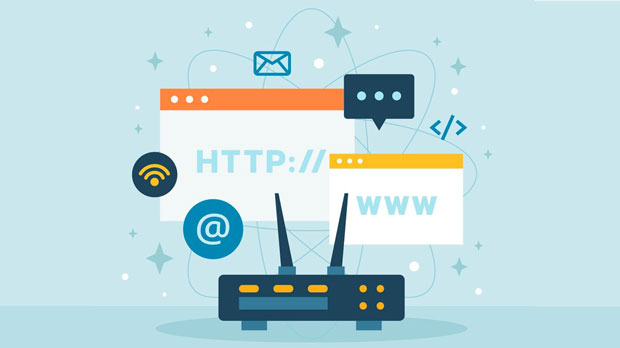A proxy server acts as an intermediary between a client and a server, forwarding requests from the client to the server and returning responses back to the client. The reverse proxy, on the other hand, is positioned at the front of multiple servers and forwards requests to various backend servers. While both proxies are used to enhance security, load balancing, and caching, their roles and implementation contexts differ significantly. Understanding these differences is crucial for organizations that wish to optimize their infrastructure and improve security. What is a Proxy?A proxy server acts as an intermediary between the client and the destination server. When a client sends a request, the proxy intercepts it and forwards it to the server. The server processes the request and sends the response back to the proxy, which then delivers it to the client. The key functions of a proxy include hiding the client’s IP address, improving security, and caching data for faster subsequent requests. The proxy can also provide anonymity for users accessing the internet.The main advantage of a forward proxy is that it provides clients with better privacy and security. Since the server only communicates with the proxy, the client's IP address is hidden, which can prevent unwanted access or attacks from malicious websites. This setup is commonly used in corporate environments to restrict or monitor internet access, providing greater control over the resources that users can access.What is a Reverse Proxy?A reverse proxy, as opposed to a forward proxy, sits between external clients and internal servers. Instead of forwarding requests from the client to the server, a reverse proxy receives client requests and directs them to an appropriate backend server. The reverse proxy then relays the server’s response back to the client. Reverse proxies are typically used in larger web architectures where multiple backend servers need to handle client requests in a distributed fashion.The primary advantage of a reverse proxy lies in its ability to perform load balancing, distribute requests across multiple backend servers, and improve scalability. By hiding the identity of the internal servers, a reverse proxy adds a layer of security, making it difficult for potential attackers to target specific servers. Reverse proxies can also handle SSL termination, compress content, and serve cached content, which can enhance the overall performance of a web application.Key Differences between Proxy and Reverse Proxy1. Position in the Network: A proxy server is typically located between the client and the server, whereas a reverse proxy sits in front of one or more backend servers. This fundamental difference dictates how each proxy handles traffic and requests. A forward proxy mediates between the client and the destination server, while a reverse proxy mediates between the client and the server pool, distributing the load.2. Use Cases: A forward proxy is commonly used by individual clients or organizations that want to filter, cache, or anonymize their traffic. It is ideal for managing the internet usage of clients or employees. In contrast, a reverse proxy is typically used to improve server-side operations, such as distributing the load across multiple servers, ensuring redundancy, and improving security. It’s often found in large-scale websites or applications.3. Security Implications: Both types of proxies contribute to security, but they serve different purposes. A forward proxy can hide a client’s identity and make it difficult for external websites to track user behavior, thus providing anonymity and privacy. A reverse proxy, however, primarily serves to protect internal servers from direct exposure to the internet, making it harder for attackers to target specific backend systems.4. Performance Enhancements: A forward proxy can improve client-side performance by caching frequently accessed data. This reduces the number of requests that need to be sent to the origin server. On the other hand, a reverse proxy enhances server-side performance by load balancing requests across multiple backend servers, preventing any single server from being overwhelmed.5. Caching Mechanisms: Both proxies may implement caching, but in different contexts. A forward proxy can cache content on behalf of the client, storing frequently accessed data to speed up future requests. A reverse proxy, however, can cache responses from backend servers and deliver those responses directly to the client, reducing the load on internal servers and speeding up response times.Benefits of Using a Proxy1. Improved Privacy: A forward proxy can mask the client’s IP address, ensuring anonymity when accessing the internet. This is especially beneficial in environments where privacy is crucial, such as when browsing sensitive or restricted content.2. Access Control: Organizations use proxies to filter traffic and enforce access policies. Forward proxies can block access to specific websites, monitor user activity, and restrict access based on certain criteria. This helps maintain a secure and compliant browsing environment for employees.3. Security: A forward proxy can act as a security layer, blocking malicious websites and preventing certain types of attacks. A reverse proxy adds another layer of defense by keeping internal servers shielded from direct exposure to the internet, thus reducing the attack surface.4. Load Balancing: A reverse proxy performs load balancing by distributing incoming requests among multiple backend servers. This helps ensure that no server is overwhelmed, improving the responsiveness and reliability of the web application. It also offers scalability as more servers can be added to handle increased traffic.5. SSL Termination: A reverse proxy can handle SSL termination, which offloads the computational burden of encrypting and decrypting traffic from backend servers. This helps improve performance, as backend servers can focus solely on processing requests rather than managing SSL certificates.Challenges of Implementing Proxies1. Configuration Complexity: Setting up proxies requires careful configuration, especially for reverse proxies. If not configured correctly, proxies can introduce performance bottlenecks, security vulnerabilities, or issues with load balancing. Proper monitoring and fine-tuning are necessary to ensure optimal performance.2. Single Point of Failure: Both proxy types introduce a potential single point of failure. If a forward proxy or reverse proxy goes down, clients or servers may be unable to communicate effectively. To mitigate this risk, redundant proxy servers and failover strategies must be implemented.3. Latency Overhead: Adding a proxy between the client and server introduces additional processing time, which can increase latency. While proxies often improve performance through caching, load balancing, and SSL termination, they can still introduce delays if not optimized.Both forward proxies and reverse proxies play pivotal roles in optimizing network infrastructure and improving security. A forward proxy primarily helps to manage client-side operations such as privacy, access control, and traffic filtering. Meanwhile, a reverse proxy is used to improve server-side performance, ensure load balancing, and protect backend systems from direct exposure. Depending on the requirements of an organization, either type of proxy can provide significant benefits, from enhanced security and privacy to improved performance and scalability.In summary, understanding the differences between forward and reverse proxies is crucial for organizations looking to optimize their network architecture. By carefully considering their specific needs, businesses can deploy the right type of proxy solution to enhance both client and server-side performance, security, and scalability.
Jun 09, 2025
![arrow]()



















































